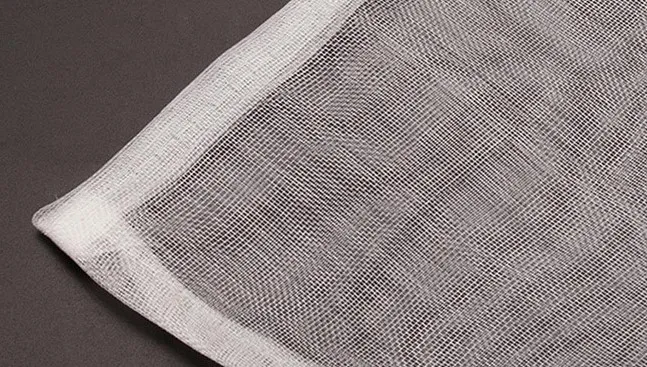-
 Afrikaans
Afrikaans -
 Albanian
Albanian -
 Amharic
Amharic -
 Arabic
Arabic -
 Armenian
Armenian -
 Azerbaijani
Azerbaijani -
 Basque
Basque -
 Belarusian
Belarusian -
 Bengali
Bengali -
 Bosnian
Bosnian -
 Bulgarian
Bulgarian -
 Catalan
Catalan -
 Cebuano
Cebuano -
 China
China -
 Corsican
Corsican -
 Croatian
Croatian -
 Czech
Czech -
 Danish
Danish -
 Dutch
Dutch -
 English
English -
 Esperanto
Esperanto -
 Estonian
Estonian -
 Finnish
Finnish -
 French
French -
 Frisian
Frisian -
 Galician
Galician -
 Georgian
Georgian -
 German
German -
 Greek
Greek -
 Gujarati
Gujarati -
 Haitian Creole
Haitian Creole -
 hausa
hausa -
 hawaiian
hawaiian -
 Hebrew
Hebrew -
 Hindi
Hindi -
 Miao
Miao -
 Hungarian
Hungarian -
 Icelandic
Icelandic -
 igbo
igbo -
 Indonesian
Indonesian -
 irish
irish -
 Italian
Italian -
 Japanese
Japanese -
 Javanese
Javanese -
 Kannada
Kannada -
 kazakh
kazakh -
 Khmer
Khmer -
 Rwandese
Rwandese -
 Korean
Korean -
 Kurdish
Kurdish -
 Kyrgyz
Kyrgyz -
 Lao
Lao -
 Latin
Latin -
 Latvian
Latvian -
 Lithuanian
Lithuanian -
 Luxembourgish
Luxembourgish -
 Macedonian
Macedonian -
 Malgashi
Malgashi -
 Malay
Malay -
 Malayalam
Malayalam -
 Maltese
Maltese -
 Maori
Maori -
 Marathi
Marathi -
 Mongolian
Mongolian -
 Myanmar
Myanmar -
 Nepali
Nepali -
 Norwegian
Norwegian -
 Norwegian
Norwegian -
 Occitan
Occitan -
 Pashto
Pashto -
 Persian
Persian -
 Polish
Polish -
 Portuguese
Portuguese -
 Punjabi
Punjabi -
 Romanian
Romanian -
 Russian
Russian -
 Samoan
Samoan -
 Scottish Gaelic
Scottish Gaelic -
 Serbian
Serbian -
 Sesotho
Sesotho -
 Shona
Shona -
 Sindhi
Sindhi -
 Sinhala
Sinhala -
 Slovak
Slovak -
 Slovenian
Slovenian -
 Somali
Somali -
 Spanish
Spanish -
 Sundanese
Sundanese -
 Swahili
Swahili -
 Swedish
Swedish -
 Tagalog
Tagalog -
 Tajik
Tajik -
 Tamil
Tamil -
 Tatar
Tatar -
 Telugu
Telugu -
 Thai
Thai -
 Turkish
Turkish -
 Turkmen
Turkmen -
 Ukrainian
Ukrainian -
 Urdu
Urdu -
 Uighur
Uighur -
 Uzbek
Uzbek -
 Vietnamese
Vietnamese -
 Welsh
Welsh -
 Bantu
Bantu -
 Yiddish
Yiddish -
 Yoruba
Yoruba -
 Zulu
Zulu
Using Plastic Mesh for Enhanced Durability and Stability in Plastering Projects and Applications.
The Role of Plastic Mesh in Plastering
In the world of construction and renovation, achieving a durable and high-quality finish is paramount. One material that has gained prominence in recent years is plastic mesh, specifically designed for plastering applications. This innovative product has transformed the way professionals approach plastering projects, offering numerous benefits that enhance both efficiency and the integrity of the finished work.
Plastic mesh, often made from polyethylene or polypropylene, is a type of reinforcing mesh that is used to provide extra support and stability to plastered surfaces. Its application is particularly valuable in environments where traditional plastering might be prone to cracking or failure due to structural movement, moisture, or temperature fluctuations. By integrating plastic mesh into the plastering process, contractors can significantly reduce the likelihood of these issues, ensuring a longer lifespan for the plaster.
The Role of Plastic Mesh in Plastering
Moreover, plastic mesh is resistant to corrosion, which is a significant concern when using metal materials. In environments with high humidity or where water exposure is common, metal lath can deteriorate over time, compromising the integrity of the plaster. Plastic mesh, however, remains stable and can withstand these conditions, making it a more reliable choice for construction in challenging climates.
plastic mesh for plastering

The flexibility of plastic mesh is another noteworthy feature. It can conform to various shapes and surfaces, making it ideal for both flat and irregular walls. This adaptability ensures a smooth finish, which is essential for aesthetic appeal. Furthermore, the mesh provides a stable base for the plaster, allowing it to bond effectively and reducing the risk of delamination. As a result, the finished plaster surface is less susceptible to cracks or defects, offering a pristine appearance and structural resilience.
Another important aspect of using plastic mesh for plastering is its compatibility with various plaster types. Whether working with traditional cement-based plasters, gypsum-based plasters, or modern synthetic options, plastic mesh can enhance the performance of these materials. By improving adhesion and providing mechanical support, it allows for a more uniform application and minimizes the potential for error during the plastering process.
Safety is also a significant factor in the choice of materials for plastering. Plastic mesh is non-toxic and does not pose the same risks associated with working with sharp metal lath, reducing the chances of injury during installation. This consideration is particularly important on job sites where laborers work in close proximity to each other.
In conclusion, plastic mesh has revolutionized the plastering process, offering a lightweight, durable, and corrosion-resistant solution. Its benefits extend beyond mere functionality, enhancing the overall quality of plaster finishes while promoting safety and efficiency on the job site. As the construction industry continues to evolve, the adoption of innovative materials like plastic mesh is likely to become increasingly common, ensuring that plastering remains a reliable and effective technique for achieving beautiful and lasting results. Whether for new builds or renovation projects, plastic mesh is undoubtedly an invaluable tool for modern plastering practices.
-
Shipping Plastic Bags for Every NeedNewsJul.24,2025
-
Safety Netting: Your Shield in ConstructionNewsJul.24,2025
-
Plastic Mesh Netting for Everyday UseNewsJul.24,2025
-
Nylon Netting for Every UseNewsJul.24,2025
-
Mesh Breeder Box for Fish TanksNewsJul.24,2025
-
Expanded Steel Mesh Offers Durable VersatilityNewsJul.24,2025











